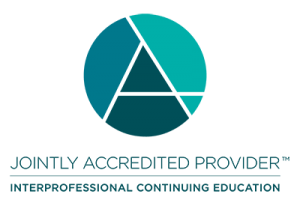Jointly provided by Postgraduate Institute for Medicine and American Sexual Health Association. This activity is supported by an independent educational grant from Hologic.
Release date: May 6, 2022
Expiration date: May 6, 2023
CE credit is no longer available for this activity.
Estimated time to complete activity: 1 hour
Target Audience
This activity is intended for physicians, physician assistants, registered nurses and nurse practitioners engaged in the engaged in the care of women.
Educational Objectives
After completing this activity, the participant should be better able to:
- Identify chlamydia screening guidelines for different populations
- Compare a risk-based screening strategy to an opt-out approach
- Describe the benefits and challenges of an opt-out strategy for an adolescent patient population
- Employ language that normalizes chlamydia screening and makes it a routine part of care
Faculty
Ina Park, MD
Associate Professor
Family Community Medicine
University of California
San Francisco School of Medicine
Denise Linton, DNS, FNP, FAANP
Professor (Retired)
University of Louisiana at Lafayette
Disclosure of Conflicts of Interest
Postgraduate Institute for Medicine (PIM) requires faculty, planners, and others in control of educational content to disclose all their financial relationships with ineligible companies. All identified conflicts of interest (COI) are thoroughly vetted and mitigated according to PIM policy. PIM is committed to providing its learners with high quality accredited continuing education activities and related materials that promote improvements or quality in healthcare and not a specific proprietary business interest of an ineligible company.
The faculty reported the following relevant financial relationships with ineligible entities related to the educational content of this CE activity:
Ina Park, MD
Dr. Park has nothing to disclose.
Denise Linton, DNS, FNP, FAANP
Ms. Linton has nothing to disclose.
The PIM planners and others have nothing to disclose. The American Sexual Health Association planners and others have nothing to disclose.
Joint Accreditation Statement
 In support of improving patient care, this activity has been planned and implemented by the Postgraduate Institute for Medicine and American Sexual Health Association. Postgraduate Institute for Medicine is jointly accredited by the Accreditation Council for Continuing Medical Education (ACCME), the Accreditation Council for Pharmacy Education (ACPE), and the American Nurses Credentialing Center (ANCC), to provide continuing education for the healthcare team.
In support of improving patient care, this activity has been planned and implemented by the Postgraduate Institute for Medicine and American Sexual Health Association. Postgraduate Institute for Medicine is jointly accredited by the Accreditation Council for Continuing Medical Education (ACCME), the Accreditation Council for Pharmacy Education (ACPE), and the American Nurses Credentialing Center (ANCC), to provide continuing education for the healthcare team.
Credit Designation
Physician Continuing Medical Education
The Postgraduate Institute for Medicine designates this enduring material for a maximum of 1 AMA PRA Category 1 Credit(s)™. Physicians should claim only the credit commensurate with the extent of their participation in the activity.
Continuing Nursing Education
The maximum number of hours awarded for this Continuing Nursing Education activity is 1 contact hours.
Disclosure of Unlabeled Use
This educational activity may contain discussion of published and/or investigational uses of agents that are not indicated by the FDA. The planners of this activity do not recommend the use of any agent outside of the labeled indications. The opinions expressed in the educational activity are those of the faculty and do not necessarily represent the views of the planners. Please refer to the official prescribing information for each product for discussion of approved indications, contraindications, and warnings.
Disclaimer
Participants have an implied responsibility to use the newly acquired information to enhance patient outcomes and their own professional development. The information presented in this activity is not meant to serve as a guideline for patient management. Any procedures, medications, or other courses of diagnosis or treatment discussed or suggested in this activity should not be used by clinicians without evaluation of their patient’s conditions and possible contraindications and/or dangers in use, review of any applicable manufacturer’s product information, and comparison with recommendations of other authorities.